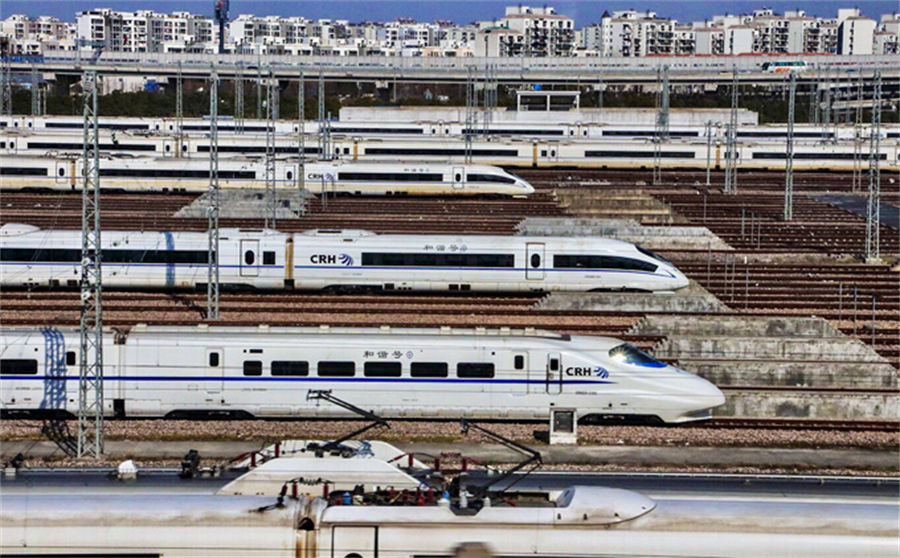Railway network to push high-quality development

A high-speed train depot on the railway between Shanghai and Nanjing. [Photo by Bruce Connolly/chinadaily.com.cn]
The goal for China's railway system in the next five years and beyond is for it to promote high-quality development and take the lead in achieving modernization to support the government's stated goal of turning the country into a modern socialist country in all respects, a top railway official said.
With the goal of laying 165,000 kilometers of track by the end of 2025, 50,000 km of which will be high-speed, the key is to develop a modernized railway system, concentrating on infrastructure, transportation services, innovation, safety, effective operation, management and governance, said Liu Zhenfang, president of China State Railway Group, the national railway operator.
By that point, the railway sector will have fulfilled the targets set in the 14th Five-Year Plan (2021-25) for development, said Liu, who is also a deputy to the 14th National People's Congress.
"To build a modern railway transportation service, we will speed up efforts to create a smart, efficient service system and use the high-speed railway network to assist in the development of a modern logistics system," Liu said.
By the end of 2025, 99.5 percent of cities with more than 200,000 residents will have access to the general railway network, and 98 percent of cities with more than 500,000 residents will have access to the high-speed railway network.
To create a modern technological innovation system, the sector will follow major national strategies promoting the development of its industrial system and expanding the advantages of China's railway sector around the world, he added.
Last month, a railway science and technology innovation alliance was set up in Beijing. The group will gather resources to conduct research on key technology, promote the industrial application of railway innovations and enhance technological communication and training.
The alliance, led by China State Railway Group, consists of key companies, universities and research institutes, with the goal of deeply integrating the academic, research and industrial sectors.
Through its research, the alliance hopes to make breakthroughs in key technologies. It will allocate resources to contribute to national strategic plans, and will study global technological problems, take up key tasks and promote technological and innovation capacity.
China's railway network has undergone rapid development over the past decade and has made great accomplishments, Liu said, adding that it ranks among the best in the world, particularly for high-speed lines, high-altitude lines, lines in extremely cold climates and heavy-load lines.
The cross-border freight train linking China and Europe connects 108 Chinese cities and 208 cities in 25 European countries. Since its opening in 2011, the service has run 65,000 China-Europe services and transported 6.04 million containers.
Over the course of the last 10 years, 4.3 trillion yuan ($617 billion) has been invested in building railways in remote and less-developed areas, accounting for 78 percent of the overall investment in railway construction, and bringing rail services to more than 130 counties.
"These achievements have not come easily. They are the result of the continual efforts of 2 million railway workers," Liu said.
























